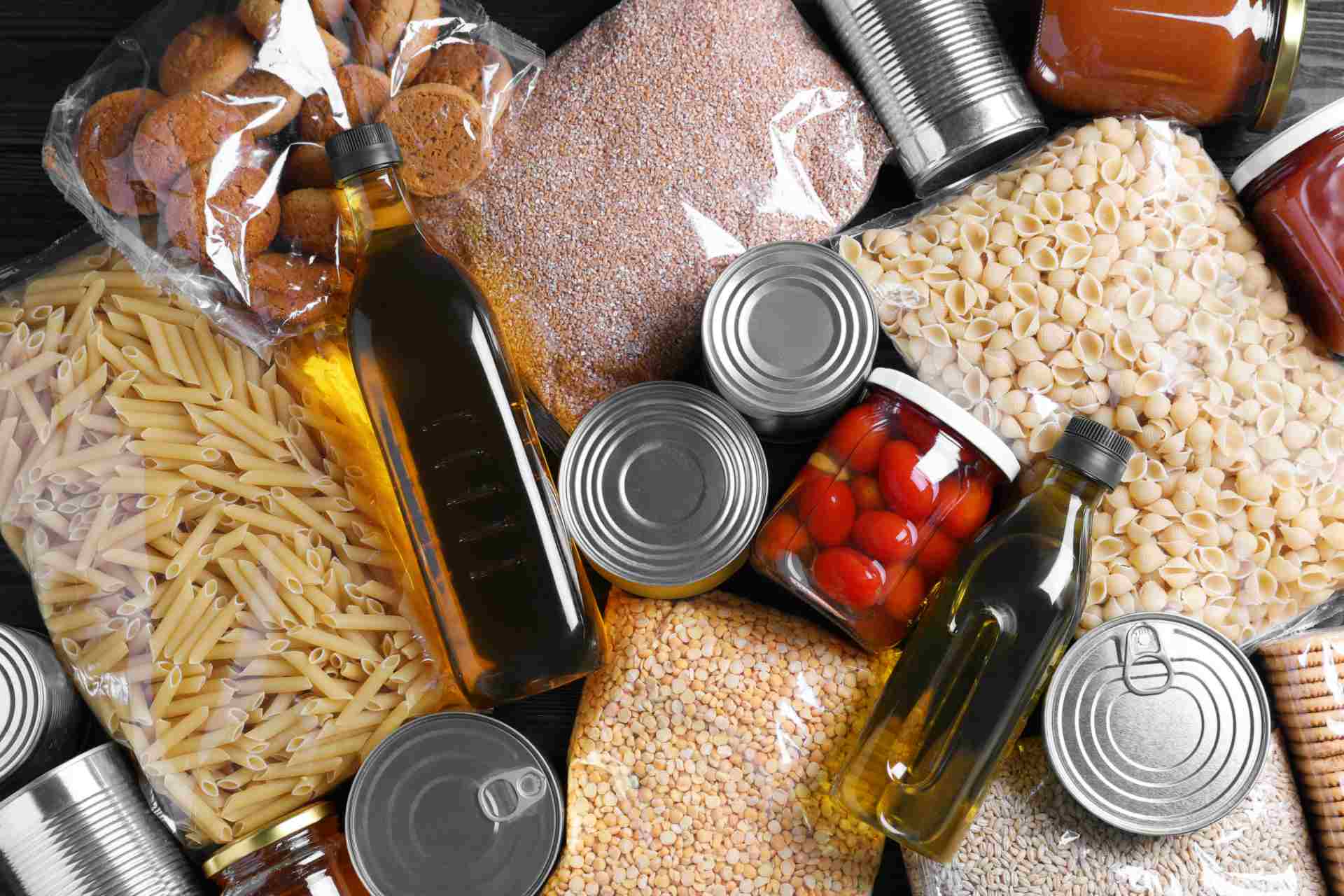Emergency Food Supplies & Food Storage: An Overview
Emergency food is the food you put away during a crisis, hence the name.
Disasters can happen occasionally without a prelude or warning. As such, you and your family might be cut off from your food source.
Given this, food must be stored in the storage room or pantry that may or may not require cooking or refrigeration (for emergencies that might cut off the power supply).
Your everyday food, such as oats, meat, or canned beans, can be considered emergency food.
However, you should note that these food sources should be consumed at various times during a crisis, depending on their eatability or shelf life.
Moreover, emergency food can likewise be grown from your backyard for easy access in case of a lockdown.
Additionally, crops cultivated at your house can keep you and your family full in the light of monetary emergencies.
Who knows? It also provides a good source of income.
Importance of Emergency Food and Stockpiling
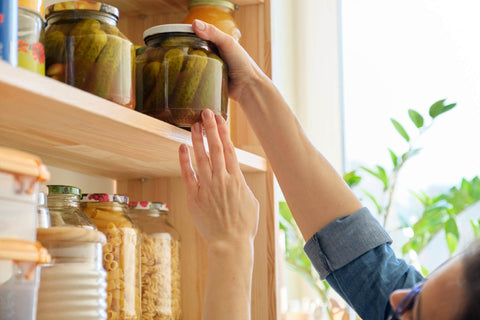
Emergency food is crucial because of multiple factors.
First of all, it is essential because, in case of natural calamities like floods, storms, etc., these can guarantee your family's survival until help shows up or until the ways to the family's food source are clear.
Moreover, having emergency food prepared can reassure your family that their needs can be sustained as soon as disaster strikes, regardless of whether they have access to the grocery store, department store, or farm where they get their food.
In essence, this will allow the family to function well under pressure, keeping the feelings of anxiety low and having the option to remain mentally sound and calm during a crisis, thereby allowing them to make wise judgments.
Furthermore, emergency food is additionally essential to keep up with monetary stability during emergencies or disasters.
Keeping your food storage room or food pantry full of goods is another exciting money-saving tip amid a crisis.
This is because, in times of disaster, there is an evident effect of increased prices and decreased supply of essential commodities due to people's initial response to panic-buying mode.
Having something set aside for circumstances like these guarantees your health and the funds you need to buy various necessities.
Indeed, even in monetary emergencies, having emergency food nearby can allow your family to allocate money to other necessities.
This article will discuss the key points to consider for long-term food storage and provide a list of shelf-stable foods with considerably longer shelf lives that you can add to your survival food.
Key Points to Consider for Long-Term Food Storage

In buying food for long-term food storage, it is essential to take note of the following criteria:
-
Long shelf life
Even though you're making an effort not to match a similar sort of long-term period of freeze-dried food (20-30 year shelf life) or the long-term period of eatability of MREs (5-8 year shelf life), you need to be brilliant about picking food items and goods that will last you long in times of an emergency. On that note, avoid goods and products that can't last for at least a year.
-
Easy to store
You should choose items and goods with durable packaging (i.e., cans, boxes, etc.) instead of buying food in plastic wrappers. This is also why limiting frozen or chill-preserving food is a smart move. But that is not all. Doing so may also be advantageous in case of a power cut-off.
-
Easy to prepare
You won't be guaranteed access to basic cooking utilities and essentials during emergencies. As such, storing food items and goods that are very easy to prepare and cook is vital. With this, you may store food that can be eaten as-is, food requiring only reheating or rehydrating, or food that is easy to mix and match with other ingredients.
-
Nutritional value
Of course, in an emergency, not everything needs to be "healthy." Emergency food is stored not for its nutritional value but to have something to eat for as long as the disaster lasts. Still, storing healthy food (if possible) should be a priority. Mental or emotional comforts are valuable in a crisis; you don't want to make things worse by trying to live off junk food.
-
Calorie density
Some food, or how they are packaged, allows you to consume more caloric bang-per-square-foot than others. In addition to that, limited space is often a huge problem as you build up your pantry. -
Dietary restrictions
An emergency is a better opportunity to be picky, but avoiding food sources your family generally hates (or doesn't eat) is also a good idea. Moreover, you may want to avoid food that is not allowed in your religion or that concerns a family member with a dietary problem, such as lactose or gluten.
25 Best Survival Food With Long Shelf Life
If you are wondering what food is best to store in your emergency pantry, refer to the list below:
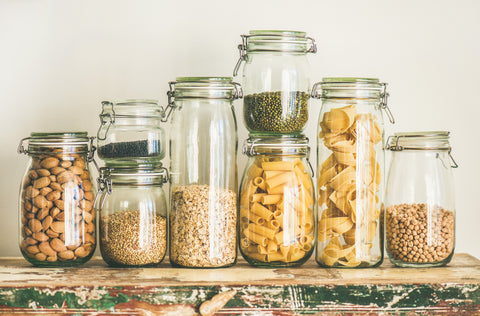
1. Dried Beans
Dried beans, especially when packed and stored well, can last up to thirty (30) years.
To extend the shelf life of dried beans, they must be stored in impermeable compartments or airtight containers with moisture prevention to forestall the occasional spoilage in stored food sources.
Sure, having dried beans every day is a bit boring.
However, if you mix it with rice and a few different spices, you can make a lot of exciting flavors. This will give you the contrast to your food stockpiles and the types of recipes you could use out of your emergency reserve.
To store dried beans effectively, it is suggested that airtight, sealable food storage containers and Mylar bags be used. These containers prevent oxygen absorption, which is important for long-term foods.
This type of packaging will greatly help extend the shelf-life of dried beans and almost all of the foods you are looking to store.
2. Rolled Oats
If you are looking for a very filling food source, you should buy rolled oats—you can easily use a variety of them.
Compared to other food types, rolled oats are comparably difficult to prepare. Be that as it may, rolled oats can last up to thirty (30) years if kept in airtight, sealable food storage containers and mylar bags.
Moreover, rolled oats are versatile. You can boil them, toast them, grind them into flour, bake them into your favorite muffin, sprout them, or make them into oat milk.
Rolling oats are also known for their myriad health benefits. They are rich in antioxidants, contain a powerful soluble fiber called Beta-Glucan, and can lower cholesterol levels and protect LDL cholesterol from damage.
3. Pasta Products
Pasta, or any pasta product, is a great shelf food because it is rich in carbohydrates, which you can mix with anything more to make cold or hot pasta, depending on how you like it.
Generally, commercially packaged freeze-dried pasta, which can be bought in grocery stores, lasts eight (8) to thirty (30) years.
Just make sure to take note of their expiry dates before making your purchase.
4. Dehydrated Food (Fruit Slices)
Dehydrated foods, specifically dried fruits, have dried out, such as raisins, Gourmet Food Dehydratorapricots, apples, dates, etc.
You will be surprised to know that there are a lot of kinds of dehydrated fruits and vegetables.
As such, most dehydrated fruits in bulk are quite expensive. However, a Gourmia Food Dehydrator is a more affordable yet delicious choice.
However, you should also consider that slicing and drying fruits and veggies can be time-consuming, so you may want to factor that in.
In retrospect, dehydrated fruits can be preserved for five (5) years; however, dates and raisins may keep longer if stored the same way as beans but at a cooler temperature.
You can also freeze-dried food to make them more shelf-stable foods.
5. Cheese
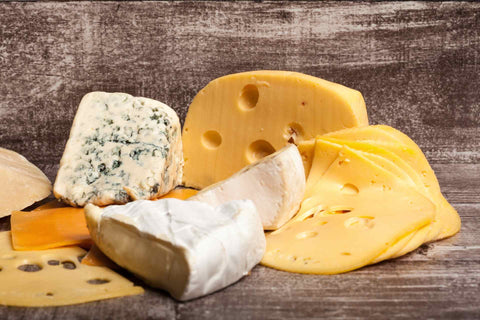
There are different ways of storing cheese, such as in wax, canned cheese from Bega and Kraft, freeze-dried cheese, and dairy products that can last for a long time.
6. White Rice
Rice is one of the priority food varieties for reserves since it is cheap, simple to get, and easy to store for an extraordinarily long shelf life.
Besides, rice can easily last up to thirty (30) years and should be stored in food-grade containers and bags.
7. Dehydrated Carrots
Another dehydrated food on this list is dehydrated carrots because they last for up to twenty-five (25) years.
8. Dried Corn
Canned corn and dried corn are relatively cheap, delicious, and have a simple 10-year shelf life.
9. Legumes: Lentils and Peas
Most preppers, beginner or not, stock on lentils.
If you do, purchasing whole lentils—and not the split ones—may be a good move, as they last much longer.
They are good shelf-stable food to store as they are a great source of fiber and are very easy to cook on their own or to mix with other dishes.
By standard, lentils' shelf life typically lasts four (4) to five (5) years. However, if stored in Mylar oxygen absorber bags, they can last up to twenty (20) years.
10. Canned Baked Beans and Canned Spaghetti
Canned beans are convenient because they can easily be stored in small tins and bug-out bags.
Likewise, you can also take them outdoors while remaining super delicious and easy to eat, hot or cold.
11. Canned Powdered Eggs
Canned powdered eggs can be another source of chicken or proteins, even if they are just food additives.
As such, canned powdered eggs are a great shelf item as they can last for as long as seven (7) years.
12. Pemmican
Pemmican is a Native American-invented emergency food produced using local wild animals' lean meat.
As such, the meat is dried over a fire, blended with fat and seasoning berries, and squeezed into bread roll-estimated snacks.
13. MREs (Meals Ready To Eat)
Initially, MREs were made so soldiers could have high-energy, long-lasting food sources.
With that, MREs are the basics of long-lasting foods that are made to be compact but carry 24 or 72 hours' worth of nutrients.
This makes it a great addition to the bug-out sack or any 72-hour survival kit, as they generally contain many meals in a single pack that can be blended or eaten alone.
MREs are likewise perfect for use in transient situations, such as when an emergency food source cannot be relied on for a short time.
For this reason, most 72-hour survival packs will have an MRE or freeze-dried meal to go.
14. Twinkies
At first glance, you may wonder why this sugar and fat-packed good is a must-have emergency food.
Having some sweetness in your meal is a good idea in an emergency. If any, Twinkies are the one dessert that has been proven to outlast a nuclear fallout.
15. Jams and Jellies
Popular pantry staples, jams, and jellies have existed for generations.
Thanks to their sweet flavor and spreadable texture, they are perfect for various sweet and savory foods, from toast to ice cream to a pork roast.
Most jams and jellies have long shelf lives. Commercially produced ones that haven't been opened can be kept for up to two years in a dry, cool environment.
Longest-lasting condiments to add as prepper foods:
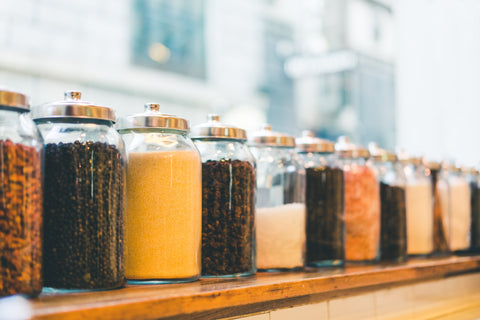
16. Salt or Sugar
Two condiments to add to your food storage are salt and sugar.
While honey can be used as a kind of sugar, which likewise endures for a long time, sugar and salts are perfect for adding to food sources and are basic ingredients in numerous recipes.
17. Baking Soda
Baking soda and baking powder last a long time. Yet again, consider whether you want to cook portions of bread or doughy items when the world ends.
Certain individuals try not to stock an excessive number of things that require a ton of cooking. Hence, consider this before putting baking powder in your survival food storage.
18. Corn Starch
Corn starch has one of the longest shelf lives of any food.
It is a white, powdered corn-based product used in cooking or as a thickener for stews, gravies, and sauces.
Corn starch has a long shelf life when kept in correct storage conditions and can remain active indefinitely.
19. Vinegar
Since ancient times, people have used vinegar for various purposes, including cleaning, cooking, and treating illnesses.
The product's endless shelf life makes it surprisingly durable. It won't go bad, but the flavor and potency may alter over time.
In general, vinegar's flavor will strengthen the longer it is kept.
20. Oils
Vegetable oil is used for various applications, from cleaning to cooking. It typically has a shelf life of up to two years, though this might vary depending on the type of oil and how it is packaged.
Unrefined vegetable oils, such as extra-virgin olive oil and cold-pressed canola oil, have shorter shelf lives because they lack preservatives and are more susceptible to oxidation.
These oils can last up to six months if properly stored. Due to processing and additives, refined vegetable oils, including soybean, sunflower, and corn oil, are more stable and can last up to two years.
21. Worcestershire Sauce
Worcestershire sauce has been a popular condiment for enhancing food flavor for generations. Its distinctive flavor combines sweetness, sourness, and spice.
Like soy sauce, most Worcestershire sauces have a two—to three-year shelf life when stored properly. However, they must be refrigerated and consumed within six months of opening.
Worcestershire sauce can also be kept longer by being placed in the freezer.
This increases the sauce's shelf life by up to six months. Pour the sauce into an airtight container and freeze it for later use.
When ready to use, let it thaw overnight in the fridge.
22. Honey
Honey is a great natural sugar that lasts forever. It can be a great survival food in times of disaster.
23. Stock or Bouillon
This works for soups and potato or rice to add seasoning to a dish.
24. Instant coffee, cocoa powder, or tea
Contingent upon your water reserves, you might only have a desire to drink a little espresso if you should depend on your prepper's reserve of food.
So, instant coffee, cocoa powder, or tea is a great option.
25. Powdered Milk
Powdered milk (or powdered protein supplements) is a must-have emergency food in your pantry. It can be cooked with or used in drinks quickly and conveniently.
Moreover, protein powder provides many supplements not found in other frozen or easy-to-store foods.
Shelf Stable Foods: Food Storage & Food Supply

When storing any prepper foods, there should be great consideration in extending their shelf life.
Following basic storage and wrapping practices can make a big difference, as they can often determine a food's longevity.
Utilizing mylar storage bags and oxygen absorbers is one incredible method for guaranteeing that your food is sealed and will not foster molds after some time.
As the article emphasizes, Mylar bags are perfect for long-term food storage. They restrict the elements influencing food varieties, such as heat, light, moisture, oxygen, and annoying mice and rats (in case you have those little creatures at home).
Ultimately, emergency food supplies are one key element of emergency preparedness. Survival food, as the name implies, will help you "survive" one of the toughest times you and your family could ever experience.
So, don't wait for a fire to break in, a storm to fall, or an earthquake to shatter.
Prepare your survival food, stock up your food supply, and invest in shelf-stable food such as canned veggies, canned meats, green beans, canned tuna, white rice (or even instant rice), and canned soups to help you get by.
Of course, it doesn't always have to be a portion of canned food; you can also invest in foods with essential nutrients for your survival diet.
Conclusion
A well-stocked pantry should include foods with long shelf lives. These foods offer security and convenience and can help stretch a food budget when needed.
We discussed a wide range of foods, including canned fruit lasting up to five years, pemmican lasting ten years, and honey lasting forever.
Although they might not be the healthiest options, several foods can offer comfort and security in difficult situations. With proper rotation and storage, these foods can survive very long.

